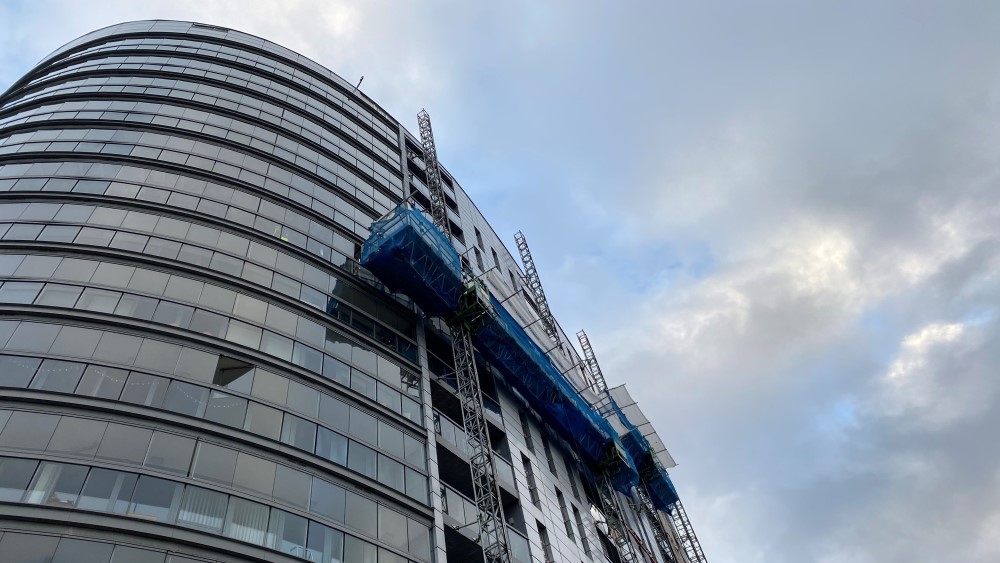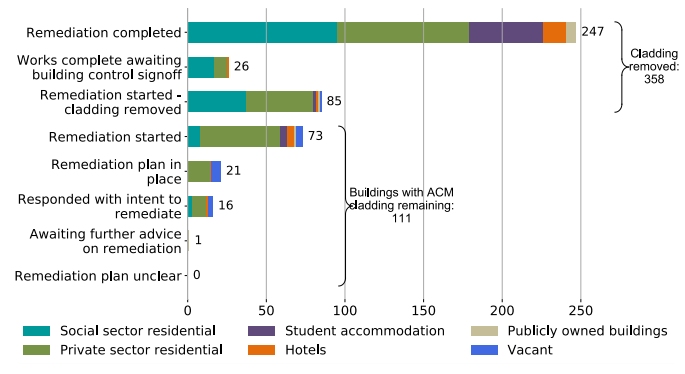
Remediation of combustible aluminium composite material (ACM) cladding on high-rise publicly owned buildings in England is nearing completion, with work complete or started on 98% of buildings identified.
That’s according to the latest Building Safety Programme figures from the Ministry of Housing, Communities and Local Government (MHCLG).
A total of 157 social sector buildings have completed or started remediation and of those, 149 (93%) have had their ACM cladding removed.
However, the private sector was moving at a slower pace, with 87% of 188 buildings having either completed or started remediation. Of those, 136 buildings (63%) have had their ACM cladding removed.
Over all, 358 buildings (76% of all those identified) no longer had ACM cladding systems as of the end of March, an increase of 12 since the end of February.

A total of 111 buildings with ACM cladding remain, with remediation started on 73. A further 21 buildings have a remediation plan in place and the owners of 16 have responded with intent to remediate. The owner of one building is awaiting further advice on remediation. There are now no buildings where a remediation plan is unclear.
The remediation works have come in response to the Grenfell Tower disaster on 14 June 2017, in which 72 people died. The Building Safety Programme was established after the disaster and on 17 October 2018, MHCLG announced the release of funding to help remediate high-rise social sector residential buildings with ACM cladding unlikely to meet Building Regulations. That was followed on 9 May 2018 with an announcement that the government would fund the remediation of high-rise private sector residential buildings.










